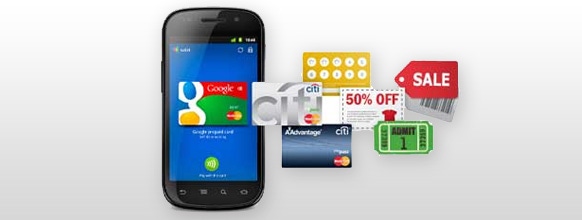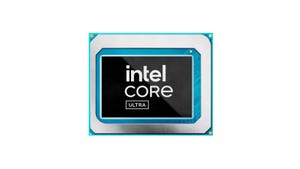Last week I attended the GSMA’s NFC & Mobile Money Summit in Milan to take the pulse of what’s been happening in the mobile contactless payments space over the past year.
October 31, 2012

By Guillermo Escofet
Last week I attended the GSMA’s NFC & Mobile Money Summit in Milan to take the pulse of what’s been happening in the mobile contactless payments space over the past year.
Most of the discussions at the conference left me with a tremendous sense of déjà vu. Although the pace of NFC-handset launches has really picked up over the past 12 months, progress in other areas remains slow. And the same old questions that have plagued mobile NFC for years remain stubbornly in place: Is there much user demand for mobile contactless payments? Is there much of a business case? How should contactless payments on phones be secured? Who should play that pivotal role? Can a premium be charged for mobile NFC?
Perhaps more worryingly, a new question is looming like a black cloud over the nascent mobile NFC industry: Why are there still no convincing examples of enthusiastic user adoption of mobile contactless payments, even in countries such as Japan and South Korea where the technology has reached significant penetration? Could it be that, going back full circle to the first question above, NFC payments don’t meet any fundamental consumer need?
Where’s the user demand?
In Japan, where handsets featuring Felica contactless technology two years ago already accounted for 60 per cent of the total number of handsets, take up of the technology is relatively low – reportedly around 15 per cent of users – and is largely confined to public transport. It is not used much to pay for goods in shops – even though leading Japanese carrier NTT DoCoMo made a huge investment in helping retailers pay for the rollout of Felica-enabled payment terminals. And when the iPhone and other smartphones started flooding into the Japanese market, many users dumped their Felica feature phones for these new handsets, casting doubt on the stickiness that the Felica mobile wallet was meant to provide.
In South Korea, where 20 million NFC-enabled phones are expected to be in circulation by yearend – amounting to around 40 per cent penetration – both take-up and awareness of the technology remain poor. Only one in ten NFC-phone users are using the technology; many can’t see that it adds much value to what can already be done with plastic NFC cards (which are widely deployed in Korea); and around 50 per cent of Korean consumers still don’t know what is NFC.
A big barrier in South Korea – and one that it shares with the vast majority of other countries in the world – is a scarcity of NFC-enabled payment machines in shops. Only around four per cent of South Korean retailers have deployed NFC point-of-sale (POS) terminals – even though these are widely deployed in public transport and taxis.
Retailer doubts
Getting retailers to adopt of NFC is proving to be the hardest technical challenge in enabling contactless mobile payments. And what makes it a particularly hard challenge is that it is prey to the horribly tricky “chicken-and-egg” dilemma that has undermined so many other handset-dependent mobile technology initiatives, such as broadcast mobile TV and push-to-talk. Retailers won’t invest in NFC payment terminals until there are more mobile NFC users out there, and users won’t buy NFC handsets or start using the technology (if already incorporated into their handsets) until there are more NFC payment terminals out there.
From talking to retailers, it is clear that most are unsure about the business case for NFC. They are worried about the cost of implementation; about whether mobile NFC payments will end up being costlier than card payments; and about whether the faster transactions that NFC supposedly enables will end up making a big difference to their bottom line. The result is that most are taking a wait-and-see attitude.
The good news for NFC is that some of the big vendors supplying payment terminals to retailers have embraced the technology and are making it a default feature in their new products. One of the biggest of them all, VeriFone, says that 80 per cent of the terminals it ships now come equipped with NFC.
However, even if all POS-equipment manufacturers were to follow VeriFone’s example, it would not mean that all payment terminals in shops would be NFC-enabled in the immediate future. That’s because the lifecycle of payment terminals tends to be between five and seven years (although some heavy-footfall retailers say that it can be as short as three years). And big retail chains with hundreds or thousands of outlets can spend two years updating their POS infrastructure.
POS deployment costs
Also, plugging in a new POS terminal is not the only thing retailers need to do to enable NFC – especially if it’s not just contactless payments they want to enable.
Even mobile-contactless-payment enthusiasts will admit that payments alone are not enough to make a success of mobile NFC. From a user perspective, mobile brings few added advantages over cards. And from the perspective of the companies that will be delivering mobile NFC services, payments are a low-margins business with little room for feeding revenue to extra hungry mouths.
There are numerous other services that can be enabled in a retail environment using NFC handsets that are far more compelling for users and more lucrative for service providers. These include collecting and redeeming loyalty points and offers; connecting to additional product info; and comparing prices.
The biggest NFC POS deployment so far in Europe, by French retail giant Carrefour, was primarily driven by the supermarket chain’s desire to make its loyalty-points scheme more interactive. And in South Korea, the numerous mobile wallets launched by retailers there are primarily focused on loyalty points.
But although the way of accepting payments on POS terminals from NFC cards or devices has been standardized, the same cannot be said for loyalty points and vouchers. Each NFC POS deployment requires adapting the software on each payment terminal and integrating each terminal with the retailer’s backend loyalty-scheme, offers and CRM systems. This is not only time-consuming but costly.
Whilst the cost to retailers of upgrading to NFC is normally framed in the context of changing payment terminals, most retailers will wait until they have to change these anyway before introducing NFC, and the price of NFC POS terminals is typically only around 15 per cent dearer than non-NFC terminals. The real cost lies in backend integration.
Handset availability
What about NFC handsets? Are there enough of these in circulation? The short answer is no, but momentum behind NFC-handset launches had really picked up over the past year or so.
Nine out of the top ten handset makers are now churning out NFC-enabled phones and, in the case of the Android operating system alone, around 1 million NFC handsets are shipping out every week. There are currently around 85 NFC handset models on sale globally – out of a total of nearly 4,000.
The big gaping hole in NFC-handset availability remains the iPhone. For a second year running, Apple disappointed NFC enthusiasts by not including NFC into its latest iPhone model. It has left some big retailers such as Tesco questioning how soon NFC will gain traction amongst mass-market handsets.
Also, many of the NFC handsets that have been rolled out by the likes of Nokia and BlackBerry-maker RIM are not, on face value, enabled for payments, but rather for activities such as content sharing (by tapping phones against each other) or accessing web sites and offers (by tapping on NFC tags in posters and other physical-world objects).
What about the secure element?
Yet, although these phones might not have launched with the “secure element” necessary for authenticating NFC payments, many do come wired with a connection between the NFC chip and the SIM card called Single Wire Protocol (SWP), allowing especially-adapted SIM cards to be loaded on the phone which can act as a secure element. According to the GSMA, there are 53 such SWP-enabled phones commercially available today.
SWP is key to the operators’ ambitions of securing a place in the mobile NFC payments value chain, since SIM cards are the only piece of handset real estate over which they still have control. By controlling the authentication of contactless payments on phones, they aim to get a slice of the revenue generated by these payments. And they plan to do that by charging SIM-space rental fees to NFC app providers, such as banks, retailers and transport companies. But it’s yet not clear how operators will price these fees and whether app providers will be willing to pay them, regardless of price.
A representative of French bank BNP Paribas who spoke at last week’s summit referred to a recent survey that found that French consumers would be willing to pay a premium of up to €2 a month for mobile NFC services. The implication there is that app providers could pass on the cost of SIM-rental fees to customers. In China, meanwhile, leading operator China Mobile, which is rolling out mobile NFC payments with local card-payment network China UnionPay across 50 cities, plans to charge both app providers and users.
But surveys in most other countries have consistently shown that consumers would be unwilling to pay a premium for the convenience of tapping their phone to make instant payments. And most banks will tell you that they are not prepared to pay SIM-rental fees that exceed their current card-issuing costs. Retailers, meanwhile, are unlikely to want to pay any fees at all.
And, of course, operators are competing with rival visions on how to secure mobile NFC transactions. Smartphone OS and hardware providers that have built mobile app ecosystems around their brands, such as Google, RIM, Nokia and Samsung, are pushing for secure elements embedded in phones to roll out services independently from operators. Meanwhile, banks have been trialling secure elements in microSD cards or smart stickers to roll out services without relying on either operators or handset/OS providers.
Cloud vs. NFC payments
Furthermore, NFC is competing with other more readily deployable methods of enabling physical-world payments on phones. These methods, employed by the likes of Starbucks and PayPal, have come to be referred to as cloud-based payments – that’s because payments are authenticated with account information held in a remote server, rather than locally on the phone. The user experience is usually clunkier than with NFC – involving things like scanning QR codes and keying in PIN codes in response to a notification received on the phone.
But Starbucks is now piloting a new method with mobile-payments rising star Square which beats NFC in terms of convenience, since users don’t even have to take their phone out of their pocket to make a payment. Using the GPS in the handset, the system alerts the POS screen in the coffee shop of the user’s presence and the person at the till just taps on the screen to debit the payment from the user’s account, after checking that the user matches the ID photo displayed on the screen.
The advantage of cloud-based systems is that they are pretty much handset agnostic and at most only require downloading an app to get them up and running on phones.
In Hungary, a cloud-based service launched by mobile payments specialist Cellum in partnership with MasterCard is handling one million transactions per month. Users scan QR codes to make payments authenticated with a PIN which matches info locally stored on the handset in an app with info remotely stored in a server.
In the Czech Republic, meanwhile, the three mobile network operators there, together with the top four banks, have launched a mobile-wallet service called Mobito whereby retailers key in the user’s mobile number or ID code on their POS device and users receive a notification via either USSD or a downloaded app, which they authenticate with a PIN.
Mobito has NFC enablement on its roadmap, but has kicked off with this cloud-based solution because NFC is not yet a mass-market proposition. Likewise, when Telefonica-owned UK carrier O2 launched its mobile wallet six months ago, it did so without NFC – even though it too has NFC on its roadmap.
Early-to-market mobile NFC payment services such as Google Wallet and UK carrier Orange’s Quick Tap, both of which were launched last year, have suffered from poor take-up – largely due to limited handset choice and limited payment-acceptance points.
Conclusions
There is an unstoppable momentum behind the roll out of NFC. It’s already widespread as a payment method on public transport systems around the world, and the weight of Visa, MasterCard, banks, POS vendors, mobile operators and some major retailers is slowly but surely pushing the technology to shops – regardless of whether ordinary retailers and shoppers want it or not. A few years down the line it will most likely have become a standard option with which to pay at shop tills – certainly via credit or debit card, and via mobile for those who for one reason or another will have started using a mobile wallet.
But that is still a long way away. NFC is just a technology, an enabler – and just one of many at that. Yet the mobile industry has for far too long made mobile payments synonymous with NFC. And, by the same token, mobile NFC has been made synonymous with payments – even though it can be used for many other potentially more compelling and lucrative services. This has retarded the development of both mobile payments and mobile NFC. Mobile wallets should enable different ways of making payments. And operators should not skew the development of the mobile payments market towards SIM-based transactions, just based on their narrow interests.
Read more about:
DiscussionYou May Also Like





.png?width=300&auto=webp&quality=80&disable=upscale)

.png?width=300&auto=webp&quality=80&disable=upscale)
_1.jpg?width=300&auto=webp&quality=80&disable=upscale)



.png?width=800&auto=webp&quality=80&disable=upscale)